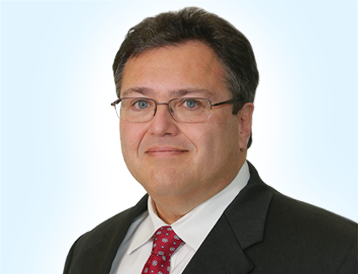PCT services have helped many companies and research organizations develop their cell therapies from early-stage clinical trials into products ready for commercialization. While some of these organizations have been parts of larger pharmaceutical companies, many more are small startup companies or research groups who have little experience with the intricacies of the FDA approval process and the complexity of performing work in a regulated environment. This has led to a lot of questions—the answers to which might have helped the cell therapy developer a lot if they had known them earlier.

With that in mind, here’s a list of frequently asked questions that we’ve encountered, and a few questions that new developers need to ask:
Q: How Do I Perform a Clinical Study?
A clinical study in preparation for FDA approval of a cell therapy is very different from a clinical study for research purposes alone. Many developers come from academic backgrounds with little knowledge of the complexities of achieving approval in an FDA-regulated environment.
There are enough complexities that the FDA maintains a page collating dozens of cellular & gene therapy guidance documents. New rulings and guidance are released frequently enough that ensuring compliance with FDA regulations essentially requires a dedicated specialist who stays up to date. As such, the requirements for a clinical study in cell therapy are constantly evolving.
Q: How Much is All of This Going to Cost?
While many cell therapy developers know to account for the direct labor and material costs of cell therapy, it is easy to forget about the indirect costs of cell therapy development and manufacturing. Items such as overhead for supervision/management, the cost of product deviations, and unused idle capacity can all add to the cost of goods for a cell therapy product.
Also, it can be easy to underestimate the cost of phase-specific quality in maintaining compliant clinical testing and manufacturing processes—which may vary depending on the clinical phase of the cell therapy product.
Q: Where Do I Get Components/Materials on a Clinical Trial Manufacturing Scale?
Some cell therapy developers have found that the cost of components that worked well for them in a lab setting quickly become untenable for the manufacturing scale of a Phase 2 or Phase 3 trial. Maintaining a reliable supply chain of components and materials that is sustainable on a clinical manufacturing scale often requires an extensive list of vendors. Having multiple vendors for supplies allows cell therapy developers to avoid supply bottlenecks if one vendor runs out of a crucial material.
Q: What Are the Regulatory Requirements for X?
This is one of the most common questions that cell therapy developers from a primarily research or academic-focused background asks. The value for “X” in the above statement can be filled with many different items, such as sterilization of containers, cryopreservation of products/materials, and shipping of therapies over long distances.
Q: How Do I Submit My IND Application, and What Will The FDA Want to See in it?
The FDA typically requires that any drug “be the subject of an approved marketing application before it is transported or distributed across state lines.” However, many cell therapies may need to be shipped out of state during the clinical trial phase for testing purposes. The Investigational New Drug (IND) application is a process wherein a cell therapy developer can get an exception to the approved marketing application rule.
The process of putting in an IND application and what the FDA wants to see in it may vary depending on the type of IND application being filed. The three IND applications are:
- Investigator IND. Typically submitted by a physician who is both the initiator and conductor of an investigation—and is the one supervising the administration/dispensation of the “drug” in question. Often submitted to study an as-yet unapproved drug, or to investigate a new indication or new patient population.
- Emergency Use IND. This IND seeks to have the FDA authorize the use of an experimental “drug” in an emergency situation where time restrictions render submitting another type of IND with a slower approval process less desirable. Can also be “used for patients who do not meet the criteria of an existing study protocol, or if an approved study protocol does not exist.”
- Treatment IND. Generally submitted “for experimental drugs showing promise in clinical testing for serious or immediately life-threatening conditions while the final clinical work is conducted and the FDA review takes place.”
In most cases, cell therapy developers will be seeking an investigator IND—the other types of IND applications are reserved for more unusual circumstances. The three kinds of information typically required of these IND applications are:
- Animal Pharmacology and Toxicology Studies. To determine if the product is “reasonably safe for initial testing in humans.”
- Manufacturing Information. Consists of “information pertaining to the composition, manufacturer, stability, and controls used for manufacturing the drug substance and drug product.” Used to determine if the drug can be manufactured with consistent quality and safety.
- Clinical Protocols and Investigator Information. This includes “detailed protocols for proposed clinical studies to assess whether the initial-phase trials will expose subjects to unnecessary risks” and “commitments to obtain informed consent from the research subjects.”
Q: How Do I Store and Ship My Therapy Samples?
Containment is a major issue for any form of cell therapy product. Not only do the cells collected for modification have to reach the manufacturing site intact and uncontaminated, they also have to be sent out to the patient for treatment.
Here, cell therapy developers have many options to choose from. In recent years, cryopreservation has caught on as a storage solution because it extends the useful life of cell therapy products in shipping—meaning the therapy can be shipped over larger distances to reach more potential patients. However, cryopreservation may affect the viability of some treatments, so it’s not always the best solution.
Q: How Do I Monitor the Safety Aspect of My Product?
The United States Pharmacopeial Convention, or USP, publishes a set of quality and safety standards that cell therapy developers can use to monitor the safety aspects of their product. However, final USP testing takes around 14 days—in which time most products will have expired.
This is usually handled by using rapid microbe tests as an in-process test to counteract the short shelf life of a cell therapy product in testing.
Q: What Does My Market Look Like?
For any cell therapy treatment to be commercially viable, the developer has to know what the market for the end product looks like; including what is a reasonable cost of goods, how large the customer base is, whether or not insurance companies will cover the cost of the treatment, and under what code.
For example, say a cell therapy developer has a product with a high approvable rating that treats a rare disease. The therapy would cure the condition with a single battery of treatments and prevent any future relapse of the condition. However, the therapy’s cost is over $1 million per dose.
Only the wealthiest families can afford such a treatment. Because the condition is rare, there is no reliable market for the therapy. So, the therapy would not be commercially viable. Even though the therapy has a high “approvable” rating, it would not work as a stand-alone therapy product long-term unless expanded to other indications over time.
Q: Should I Build/Buy My Own Facilities?
Many cell therapy startups struggle with the question of whether or not they should buy/build their own facilities, or outsource production to a third party partner.
While buying or building an internally-owned and controlled manufacturing facility may initially sound like a good idea, it can be an enormous and risky expense for all but the largest pharmaceutical companies.
One cell therapy developer that was in phase 3 for a CAR-T development process bought a 125,000 sq. ft. facility in anticipation of passing the FDA approval process so they could ramp up to mass production as soon as possible. However, the approval process dragged on and on.
The whole time the developer was waiting on final approval, the massive facility was passively eating into their budget. Ultimately, the developer had to sell the facility to get it off of the books because the upkeep costs became untenable—all before the facility was able to produce a single dose for commercial distribution.
Creating your own internal production facility means assuming a ton of risk—especially for a patient-specific cell therapy where the demand may not be consistent from month to month.
Of course, partnering with a third-party organization to handle the manufacturing of your cell therapy product also carries risks—what if the manufacturer doesn’t have the appropriate expertise to maintain safety/quality standards?
This is why it’s important to find a reliable third-party cell therapy manufacturer with a proven track record of consistently meeting quality and safety standards for cGMP manufacturing, infrastructure, and systems.
PCT’s cGMP-compliant manufacturing infrastructure includes systems for:
- Materials, equipment, and facilities controls;
- Deviation, Corrective and Preventative Action (CAPA);
- Change and document controls;
- Validation;
- Auditing; and
- Training
Need more help and information? Contact the experts at PCT for the answers to your cell therapy cGMP manufacturing questions.

